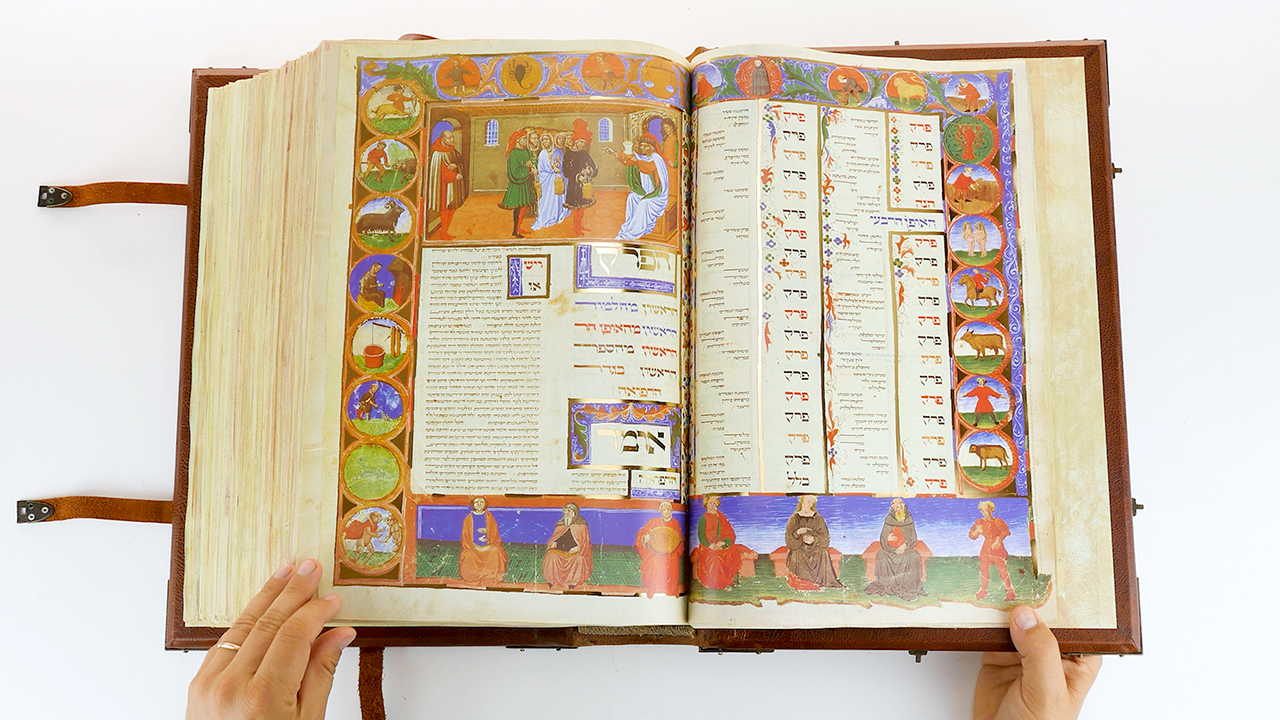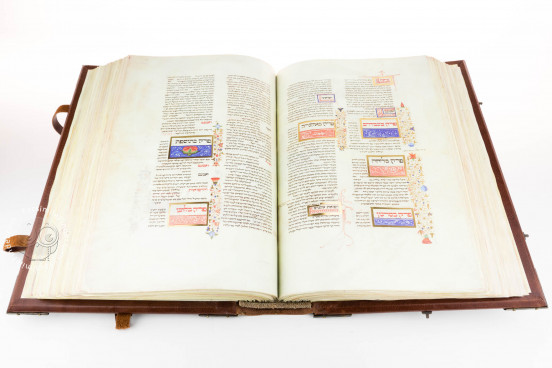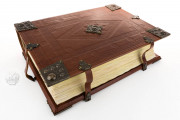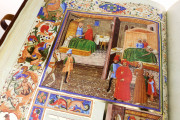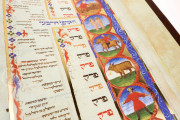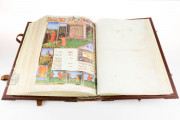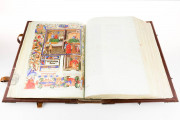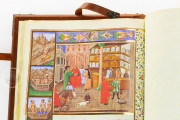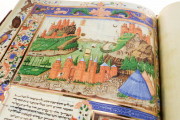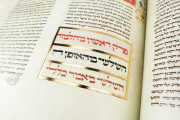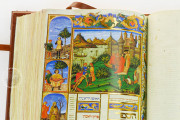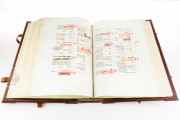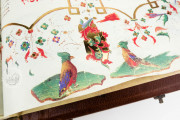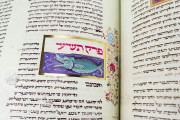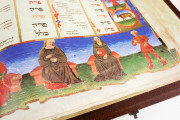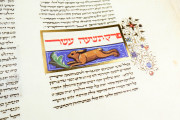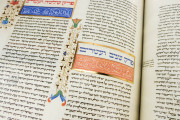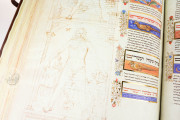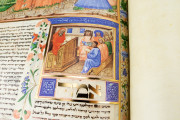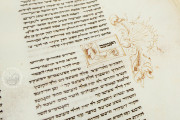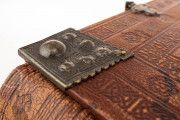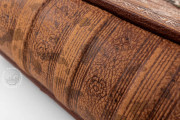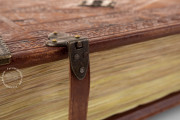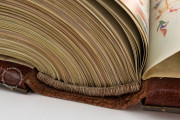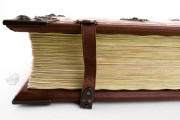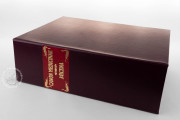Made in northern Italy during the first half of the fifteenth century, Avicenna's Canon of Medicine counts as one of the most exhaustive medical encyclopedias of its age. The five volumes, spanning a total of 532 numbered parchment folios, contain the most prominent Hebrew translation of Avicenna's Canon of Medicine, which has been penned in over one hundred copies. The manuscript provides invaluable information on late medieval medicine and boasts stunning miniatures and sophisticated decorations where rich color hues blend with gold details.
Avicenna – also known as Ibn Sina – was a famous polymath who lived in what is modern-day Iran from 980 until 1037 CE. His Canon of Medicine was translated in many languages and published in dozens of copies throughout the centuries — MS 2197 features the only complete and most popular Hebrew version, completed in 1279 by Natan ha-Meati.
An Exquisitely Elegant Medical Compendium
The manuscript's painted decoration includes ten large miniatures and nearly 500 pages decorated with a wealth of floral borders, animal miniatures, zodiac signs, and golden frames with sophisticated flower motifs. The founder of paleography Bernard de Montfaucon defined the volume as Liber Avicennae elegantissimus (the most elegant).
Consistent with medical manuscript tradition, most miniatures in Avicenna's Canon of Medicine (MS 2197) show a physician exercising his profession in a variety of scenes: a wrist test, a urine test, a pharmacy, and the curing of mental illness with medicinal herbs. The miniatures have been attributed to Leonardo da Besozzo and Cristoforo Cortese.
Among the scenes that have made the volume famous are an Italian fifteenth-century pharmacy filled with wicker baskets and blue-and-white majolica vases (fol. 492r); an allegorical representation of the schola medica Salernitana in which the wife of Robert Curthose Duke of Normandy saves him from empoisonment by drinking blood out of a wound in his arm (fol. 210r); and a mentally ill person trapped in a cage (fol. 78r).
The miniatures in Avicenna's Canon of Medicine stand out for the richness of their hues – above all emerald green, made even brighter by contrast with red – and for the splendid rendition of natural landscapes. The border decorations boast flowers and golden leaves reminiscent of French book painting.
Two Hands for Five Volumes
The text, distributed over two 56-line columns, is an example of Italian cursive rabbinic script, attributed to Yshaq ben Obadiah ben David, who penned other Hebrew codices upon commission by the family of Salomone da Perugia. A different scribe wrote the summary of the second volume (fols. 208r-209v) in Oriental Hebrew script.
A Manuscript's Journey to France
Until the eighteenth century, the work was kept in the library of the convent of Saint Dominic in Bologna. When French troops entered the city in 1796, Avicenna's Canon of Medicine was taken to Paris together with hundreds of other manuscripts. After Napoleon's downfall, the Canon was taken back to Italy and stored in Bologna's Pontifical Library, today the University Library.
Binding description
Binding
The codex is encased in a sixteenth-century binding in light Morocco leather with tooling. The decoration features sixteen Eglantine roses between two frames, embossed copper fittings in the corners and center and four straps.
We have 1 facsimile edition of the manuscript "Avicenna's Canon of Medicine": Canon Medicinae Avicena facsimile edition, published by AyN Ediciones, 2002
Request Info / Price
